A step-by-step guide for first-time aquaponics growers, filled with tools and tips you’ll need to grow cannabis plants with water at home.
Cannabis Cultivation
According to a 2017 chart by Marijuana Business Daily, the average cost of weed cultivation per square foot is $45.00. To break that number down further:
- An indoor grower will spend up to $75.00 growing marijuana per square foot.
- A greenhouse grower will spend approximately $50.00 per square foot.
- Lastly, the cheapest way to grow is outdoors, which will cost roughly $10.00 to get started.
It can take anywhere from nine weeks to eight months for growing your own marijuana plant. The growth stage for the plant depends on whether you are growing weed indoors or outdoors. Indoor space allows cannabis growers to harvest after a few weeks or months, but growing outdoors depends on natural weather and annual cycles.
Female plants vs. male plants
Female cannabis plants take longer to show signs of their gender, but you can recognize them by the white hairs that appear during the flowering stage. Male plants will have pollen sacks that appear close to the main stem near the bud sites on the female plant, one to two weeks after the flowering cycle.
The plant’s gender is critical when determining seed production. Unless a male plant turns out to be a hermaphrodite, it will not produce male cannabis seeds. The job of a male is to pollinate with pollen sacs; the position of a female is to create pre-flowers and buds.
Like humans, cannabis plants are dioecious, typically having male or female reproductive organs. However, the rare plant will have traits from both genders. Depending on the grower’s goal, it’s essential to know which one you’re working with before moving forward.
Removing male cannabis plants will cut out fertilization of the female cannabis plants, resulting in dense, seedless buds that have a higher content of cannabinoids, such as THC or CBD. The potent, resinous buds in dispensaries are typically from a female plant.
Male plants are vital to most growers and farmers during cannabis cultivation since they provide pollination, thus fertilizing the female plants. They can also pass down specific genes to combat poor genetics in some plants, such as mold resistance, and are vital for producing new strains of healthy plants.
Plant life cycle
The weed plant goes through a particular life cycle, and you’ll need to distinguish which phase your plant is in at all times. From germination to flowering, it’s essential to provide the proper nutrients, light, and oxygen at each step of plant growth.
Seed Germination
The seed germination life stage can take three to ten days. You’ll want to place your germinating seeds in a dark place that is warm and humid. Once the regular or feminized seeds open and begin to produce their first root, transfer it into a small flower pot. It will start to create the oval leaves known as cotyledons.
Seedling phase
Once you have a seedling, it should take approximately two to three weeks to complete this essential life stage. You’ll begin to notice serrated leaflet production, followed by larger, bladed fan leaves. Mature female cannabis plants have five to seven blades per leaf.
Vegetative stage
Next, your cannabis plants will enter the three to sixteen weeks known as the vegetative stage. Your female marijuana plant will need at least sixteen hours of grow light, or six hours of direct sunlight with several hours of indirect sunlight to follow.
During vegetative growth, you’ll want to provide nutrients, water, and maintenance to induce flowering in the growing plants.
Flowering stage
Finally, after the vegetative growth, the flowering phase lasts eight to twelve weeks and is the final step to producing buds. If you take good care of your plants, they should begin to create large bud sites with high contents of resin production.
Cannabis seeds
Each cannabis seed is unique. You must know which ones you are purchasing before planting them in your cannabis garden.
Regular
Regular seeds are completely organic and pure. These cannabis seeds give you a 50/50 shot at either gendered plant. For example, if you plant six seeds, you’re likely to determine sex as three males and three females out of the six plants.
Feminized
Feminized seeds taken from a seed bank are extracted from treated cannabis plants and will only produce female seeds. Feminized seeds are an excellent way to ensure you grow marijuana to have buds.
Autoflowering
Autoflowering seeds produce flowering plants around two to four weeks of growth. There’s no need to be concerned with the specific growth cycles or all the nutrients required for developing a photoperiod plant with these seeds. These are great for beginner growers who don’t know how to grow weed yet.
Photoperiodic
Photoperiod strains are the old-school weed strains your parents smoked and are best grown outdoors. When it comes to growing weed that is photoperiodic, follow the natural rhythm of the climate, seasons, and sunlight.
Aeroponics, Hydroponics, and Aquaponics Systems
Here are three recirculating aquaculture systems used for growing plants that don’t require soil.
Aeroponics is a process used by NASA that removes moisture and soil while the plant’s roots system dangles in a tank filled with top-quality, fresh air and then misted frequently with water. With hydroponic systems, the plant instead is emerged into nutrient-rich water instead of placing the roots in the soil.
The aquaponics system is a combination of the hydroponics system nutrient film technique and fish farming using both fish and plants to grow organic food. In this method, after the fish eat, cultivators can use the fish waste to supply the water with adequate nutrients. This particular growing method is excellent for maintaining cannabis deficiencies through fish food and water temperature.
History of Aquaponics
What is aquaponics? At its most basic level, aquaponics is an ancient farming method developed by wetland farmers centuries ago. Mayan and Aztec farmers cultivated chinampas in freshwater lakes and marshes, utilizing the nutrients (fish wastes) produced by crayfish, fish, worms, and microorganisms to produce a diversity of healthy crops.
More recently, Chinese farmers discovered another early aquaponics system in Southern China, where they grew rice and crops with water fertilized by ducks, finfish, crayfish, and other aquatic animals.
How Aquaponic Systems Work
An aquaponic system contains fish tanks, with wastewater pumped to cannabis plants in grow spaces filled with rocks. The plant roots take up the nitrifying bacteria and proliferate. The filtered, clean water later returns to the tank.
You can grow new plants by placing the freshwater fish in a large tank of water and then draining the water from the tank into a gravel bed. Beneficial bacteria will break down the ammonia fish waste to produce nitrogen, which helps with plant growth.
Then, the filtered water travels to the growing bed and later returns to the fish tank through the aquaculture systems.
What are the advantages of aquaponics?
Instead of only using hydroponics systems, the aquaponics system is a completely natural process that has many more benefits:
- No soil is required, thus you can easily avoid soil-borne diseases
- Aquaponics relies on a very little land
- No need for manure or fertilizer, fish waste provides natural fertilizer
- Save money due to minimal farming tools needed
- Grow two crops: both the plants and fish when you raise edible fish species
- No pesticide or herbicide usage required
Aquaponics vs. hydroponics
Aquaponics uses a hydroponic setup for growing weed in unison with fish. The addition of fish in the water tank allows you to skip providing nutrients to your organic vegetables, leafy greens, or cannabis, and instead rely on fish waste, a natural source of nutrients.
Cons of a Home Aquaponics System
While the system is ideal for multiple species of fish, including tilapia, carp, and bass, the range of plants is limited to water-heavy crops.
Aquaponics makes it possible to utilize renewable energy; however, we should note that dependence on electricity may be expensive for some growers.
A healthy aquaponics system’s infrastructure restriction makes it less resilient than soil-based gardening, which is more adaptive to changing weather conditions and temperature changes. On the other hand, Aquaponics may fail unexpectedly due to storms or power outages, which would result in a complete loss of your harvest.
Aquaponics systems are versatile enough to be installed almost anywhere, including in high-density urban areas, but initially, the infrastructure can be challenging. Tanks and pumps are necessary for biofiltration, while fish stock and waste purification units are also crucial.
Best Commercial Aquaponics System
Importance of PH control
One of the more challenging aspects of growing with aquaponics is balancing the fertilizer from the fish into your plants. If developing with aquaponics, be sure to have a solid understanding of the nutrient solution and pH levels required, as well as how to balance them through biological filtration.
Designing Your Own Aquaponics System
The simplest method for starting an aquaponic farm is to repurpose an old fish tank and pump. Your local pet supply shop should have them if you don’t have those. Be sure to dechlorinate the water and allow it to cycle for up to six weeks before adding the fish.
Once that process is complete, you’ll need to create a grow bed for the plants. Some growers use one big flood tray for several plants, and some use individual pots. Then add the fish and the plants to your tank setup, and you’re well on your way.
Sprinkle in some fish feed to begin, and they will create organic fertilizer for the plants in a short amount of time via this natural production system.
How is Aquaponics integrated into the University of Arizona’s higher education program?
The University of Arizona’s higher education program integrates aquaponics into its curriculum, offering students hands-on experience in sustainable agriculture. By incorporating aquaponics into coursework, the university provides students with valuable skills in environmental stewardship and food production. This unique approach sets the University of Arizona higher education program apart.
Tips for Managing your Aquaponics Farm
Below are several essential aspects when maintaining your aquaponics system and a symbiotic relationship between the plants and fish.
- Ensure proper oxygen levels for the fish and plants by maintaining consistent aeration and water circulation.
- Maintain water quality by regularly checking the pH levels, water temperature, water source, and ammonia levels.
- Avoid overcrowding the fish in your tank because it can cause fish to become stressed and overproduce ammonia, which is dangerous to their health. Fish benefit from having some room to roam.
- Avoid plant overcrowding in your grows bed, so they have enough room to get sunlight in the natural ecosystem.
- Feed your fish the correct amount and permanently remove uneaten fish food after feeding. Leftover fish food can cause an increase in ammonia levels and could potentially clog your system.
Daily Checklist
- Feed the fish
- Observe fish for changes in behavior or looks
- Scan your system for leaks
- Check for the proper functioning of all pumps
Modern Aquaponics Maintenance
Check and test weekly pH, temperature, ammonia, and nitrate levels in the water.
Know the correct fish to plant ratio and remove or add some plants or fish to maintain a balanced system.
Regularly check your plants for nutrient deficiencies, growth changes, or off-coloring in leaves.
Check for insects weekly to prevent or fix any pest problems before they get out of hand.
Consider cleaning your filters and clarifiers monthly to avoid clogging and buildup.
Keep your system free from algae. Some algae growth is expected when raising fish, but it can get out of control quickly.
Is it legal to home-grow weed?
It is legal to home-grow weed in some states, however, marijuana is still federally illegal to possess in the United States. It’s also important to note that cannabis plants are still fully illegal in sixteen states but recently that number has decreased and will continue to grow smaller within the next few years.
The states within the U.S. that allow home-growing weed indoors, both medically and recreationally are: Alaska, California, Maine, Massachusetts, Michigan, Nevada, Oregon, Utah, Washington, and Virginia.
The States that allow home-growing medical marijuana seeds with regulations are Arizona, Hawaii, Illinois, Maryland, Minnesota, Montana, Missouri, New Hampshire, New Mexico, Rhode Island, South Dakota, and Utah. Visit Leafy DOC to get your medical cannabis card today!

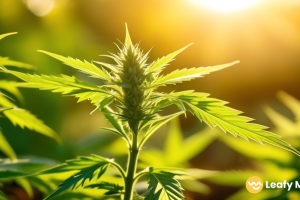
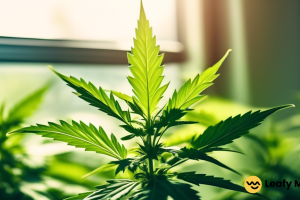
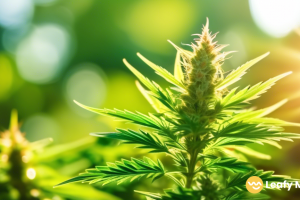




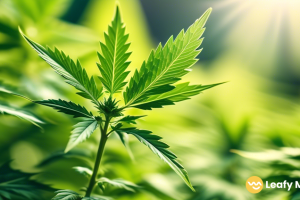
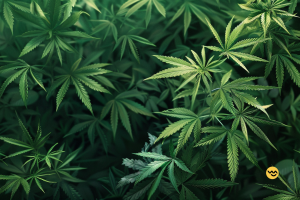
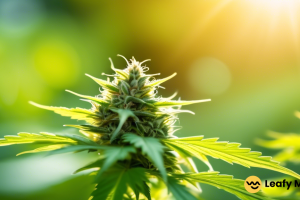
Leave a Reply